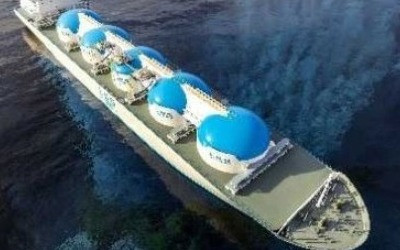February 06, 2023

Energy production in Asia and the Pacific is growing faster than anywhere else in the world. By 2030, 56% of the world’s energy will originate from the region.
A wave of new energy projects continues to drive this growth as countries seek to meet the demands of rising populations while also transitioning to renewable energy.
We’ve picked out some of the biggest projects from recent years that are set to play a key role in raising the region’s energy capacity.
An overview of the Asia-Pacific energy sector
Home to a large and diverse population at different levels of economic development, the Asia-Pacific region faces several challenges with energy supply and electrification.
Significant progress has been made over the last decade in expanding the supply of electricity to remote areas like the Pacific Islands. The transition to clean energy is also well underway, with the number of new renewable energy projects growing year on year.
Green investment has so far been focused on solar energy, offshore wind and hydropower. The region has also emerged as a leader in the production of lithium-ion batteries, a fast-growing market in which China currently holds a 79% share.
Coal, gas and oil remain the primary sources of energy, however, with fossil fuels accounting for around 85% of the region’s combined energy consumption. This figure is significantly higher than in Europe and North America.
The next decade will be pivotal as the region seeks to reduce its reliance on fossil fuels and on coal in particular. Key players like China, India and Australia are poised to play a big part in shaping both the regional and global energy outlook.
Five key energy projects in the Asia-Pacific region
A wide range of projects are currently under development as the Asia-Pacific region looks to scale up its supply of energy, creating thousands of new energy sector jobs in the process.
We’ve gathered five of the region’s most significant energy projects that have recently been completed or are set to take shape over the coming years below.
Ubol Ratana Dam Hydro-Floating Solar Hybrid Project, Thailand
Thailand’s government is currently working on an ambitious project to develop 16 floating solar farms with a combined capacity of more than 2.7GW by 2037.
Among these new solar farms is Sirindhorn dam, a major project touted as the world’s largest floating hydro-solar farm that combines solar, hydropower and energy storage systems.
Given that the country’s clean energy capacity currently sits at around 12GW, the project will go a long way to helping Thailand achieve carbon neutrality by 2050, while also creating thousands of renewable energy jobs for local people.
MacIntyre Wind Precinct, Australia
MacIntyre Wind Precinct is an onshore wind complex consisting of two wind farms currently under construction in Stanthorpe, Queensland.
At full capacity, the AU$2 billion project is expected to generate around 1GW, making it one of the world’s largest onshore wind farms.
Along with the 180 wind turbines scheduled for construction, MacIntyre Wind Precinct will also include 65km of transmission lines and two new switching stations.
The project is set to support around 600 wind farm jobs in construction and transmission across its operational lifetime.
Australia-Asia PowerLink, Singapore and Australia
The Australia-Asia PowerLink (or AAPowerLink) is a major energy infrastructure project set to begin construction in 2023, with operation starting in 2026 and completion by the end of 2027.
The intercontinental power grid will transport electricity from Australia to Singapore via the world’s longest submarine power cable. The ambitious project will also feature the world’s largest solar plant and the world’s largest battery.
At full capacity, the AAPowerLink is expected to meet up to 15% of Singapore’s electricity demand, and there are also plans to export electricity to Indonesia. The project will create around 1,500 wind farm construction jobs and a further 350 lineman jobs once operational.
Kapar CCGT Power Plant, Malaysia
Fossil fuels are set to remain an important part of the Asia-Pacific region’s energy mix over the next decade, with most new investment going to natural gas.
Malaysia is looking to leverage this natural resource by building a new 2.1GW combined-cycle power plant in the town of Kapar, which is around 50km west of the capital Kuala Lumpur, at an estimated cost of $2 billion.
The power plant will use a gas turbine to generate electricity, with waste heat routed to a nearby steam turbine that generates additional power.
Aligned with Malaysia’s commitment to net-zero by 2050, the site will be able to support hydrogen co-firing by the time commercial operations begin in 2031. It will also provide local people with power plant jobs.
Sarulla Geothermal Power Generation Project, Indonesia
Straddling the Ring of Fire, Indonesia is a volcanically active country with vast supplies of geothermal energy. In fact, the country is home to around 40% of the world’s geothermal energy reserves and second only to the USA in geothermal power generation.
The Indonesian government has been adding new geothermal power plants to its energy grid for some time, with the 330MW Sarulla Geothermal Power Generation Project among the biggest in recent years.
Completed in 2018, the power plant created around 1,800 geothermal jobs for locals and now powers the homes of 2.1 million people. It’s considered one of the world’s largest geothermal power plants.
The future of energy in the Asia-Pacific region
Steady strides have already been made towards decarbonisation, but there are still challenges for countries in the region to overcome. Chief among them is the need to meet the growing demand from a rapidly rising population without compromising long-term energy security.
As with other regions, progress has not been spread evenly; most countries are still heavily reliant on coal and lag behind the examples set by the likes of Japan and Australia. In most cases, this is because they lack the financial means to increase the supply of renewable energy.
Initiatives like the Asia-Pacific Green Deal for Business are however helping to level the playing field, particularly in places like South Asia and the Pacific Islands. Should the region succeed with its energy transitions, it’s clear that a multilateral approach will be key.
In terms of new renewable energy projects, there is growing optimism about the potential of offshore wind in North Asia. South Korea, Japan and Vietnam are now following the example set by Taiwan in developing large offshore wind farms, creating thousands of offshore construction jobs.
Geothermal energy capacity will continue to grow in seismically active countries like Indonesia, New Zealand and the Philippines. The region is also expected to become a global leader in various developing technologies like biomass and green hydrogen.
These resources, along with the region’s established networks of hydropower, solar energy and onshore wind, must all be scaled up quickly to ensure a secure and sustainable future for Asia and the Pacific.
Powering the Asia-Pacific region's energy transition
Are you looking to hire for an upcoming project in the Asia-Pacific region? We recruit for a wide range of petroleum engineering jobs and jobs in renewable energy. With a decade’s experience in the region, we can be trusted to find the right fit for your role. Contact us today to get started.






You can also use your social account to sign in. First you need to:
To connect your social account you must Acknowledge the Terms & Conditions and Privacy Policy